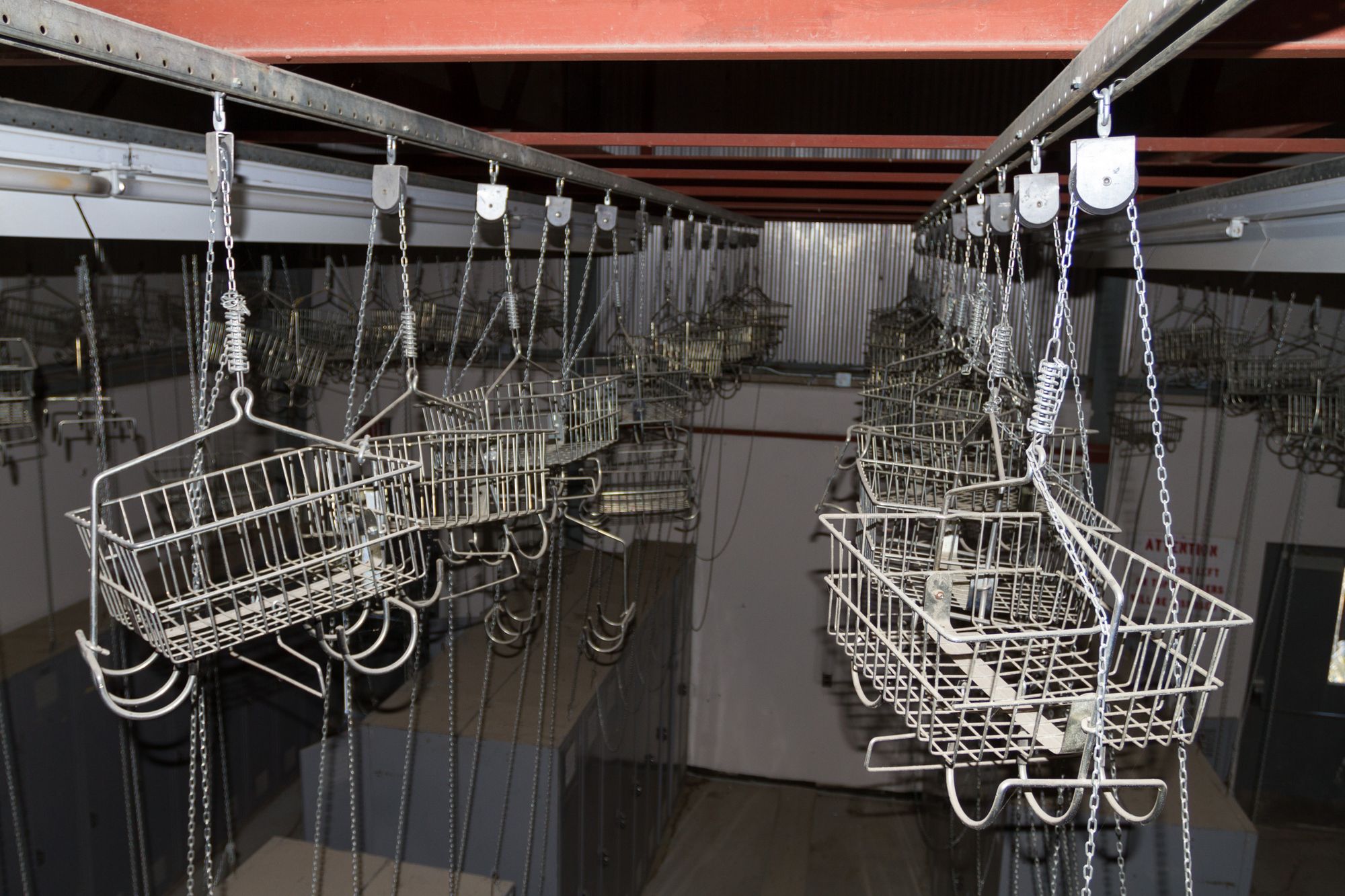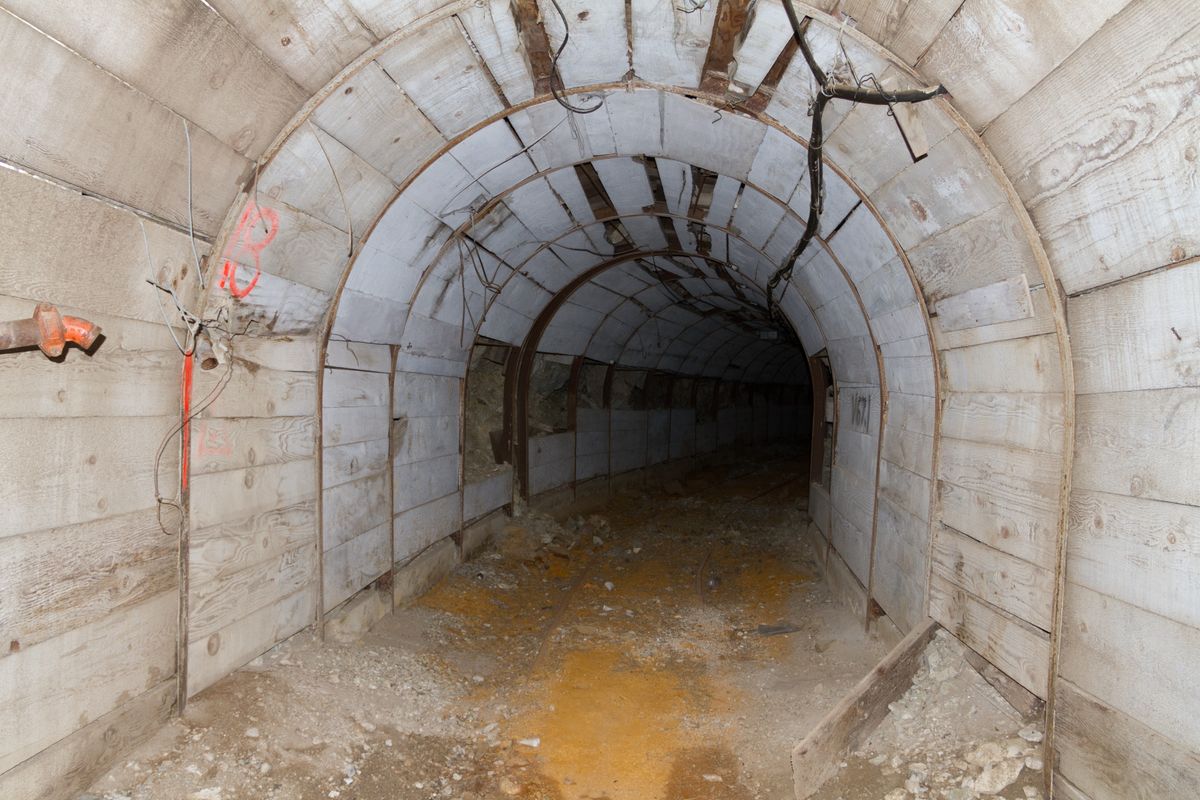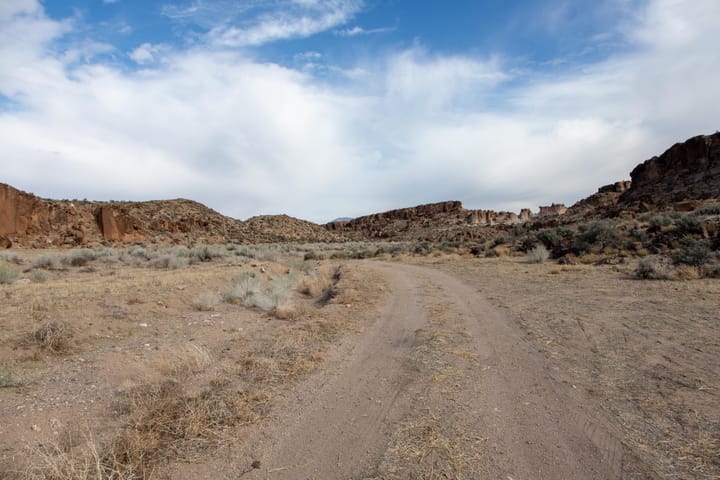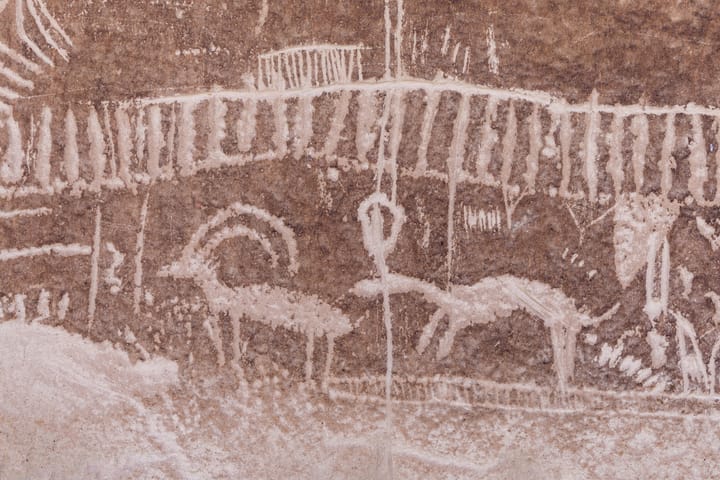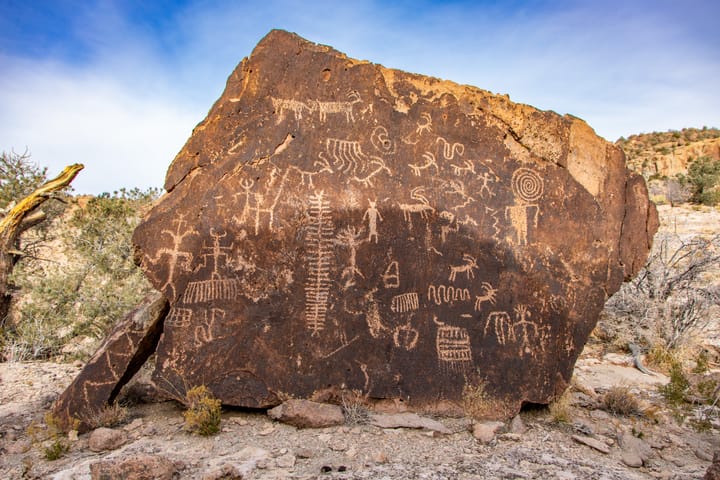This is quite a place! This is a massive and strange mine with the sound of underground rivers far below, 4-foot boreholes going hundreds of feet through the mountain into the unknown, elevators, hoists, slushers, rusty ladders, pipes, stalactites, underground offices, workrooms, explosive lockers, and strange experimental testing equipment, all spread across nine levels and miles and miles of drifts. Among all that underground maze, you'll find something unexpected: offices of the Department of Defense ICBM Deep Basing program and steel pipes where pressurized freon was injected into rock to test whether these depths could shelter Peacekeeper missiles from nuclear attack.
The Emerson Mine, originally known as the Lincoln Mine, became Nevada's second-largest tungsten producer. Between 1940 and 1982, more than five miles of underground workings on six levels yielded an estimated 500,000 units of tungsten trioxide from skarn zones formed where molten granite met ancient limestone. But the mine's story extends beyond tungsten into the realm of Cold War nuclear strategy, where Defense Department researchers conducted classified experiments in chambers hundreds of feet below the Nevada desert.
